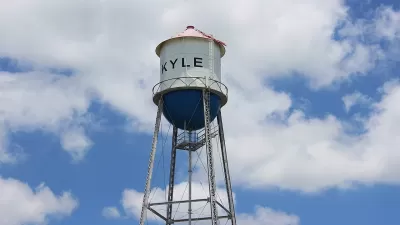The Federal Highway Administration (FHWA) made official a set of rule changes that overthrow an old way of thinking about street design.

"We probably haven’t seen the last of engineers who insist on designing local streets like surface highways. But at least now they can’t claim their hands are tied by federal regulations," according to an article by Angie Schmitt. That conclusion follows an action by the Federal Highway Administration to remove 11 or 13 existing design rules for national highways, which Schmitt defines as "a 230,000-mile network of roads that includes many urban streets."
Here, Schmitt summarizes the effect of the rule changes:
The rule change eliminates a major obstacle to safe street design around the country. The old rules applied highways design standards — wide lanes, no trees — to streets that function more like main streets, with terrible consequences for safety and walkability.
Schmitt reported on the first hints that the FHWA would change the design rules back in October, but the latest news means the changes are official. May seems to be a productive month for the FHWA, which announced the release of a design guide for separated bike lanes almost exactly a year ago, in May of 2015.
FULL STORY: It Just Got Easier for Cities to Design Walkable, Bikeable Streets

Alabama: Trump Terminates Settlements for Black Communities Harmed By Raw Sewage
Trump deemed the landmark civil rights agreement “illegal DEI and environmental justice policy.”

Study: Maui’s Plan to Convert Vacation Rentals to Long-Term Housing Could Cause Nearly $1 Billion Economic Loss
The plan would reduce visitor accommodation by 25% resulting in 1,900 jobs lost.

Planetizen Federal Action Tracker
A weekly monitor of how Trump’s orders and actions are impacting planners and planning in America.

Wind Energy on the Rise Despite Federal Policy Reversal
The Trump administration is revoking federal support for renewable energy, but demand for new projects continues unabated.

Passengers Flock to Caltrain After Electrification
The new electric trains are running faster and more reliably, leading to strong ridership growth on the Bay Area rail system.

Texas Churches Rally Behind ‘Yes in God’s Back Yard’ Legislation
Religious leaders want the state to reduce zoning regulations to streamline leasing church-owned land to housing developers.
Urban Design for Planners 1: Software Tools
This six-course series explores essential urban design concepts using open source software and equips planners with the tools they need to participate fully in the urban design process.
Planning for Universal Design
Learn the tools for implementing Universal Design in planning regulations.
Caltrans
Smith Gee Studio
Institute for Housing and Urban Development Studies (IHS)
City of Grandview
Harvard GSD Executive Education
Toledo-Lucas County Plan Commissions
Salt Lake City
NYU Wagner Graduate School of Public Service





























